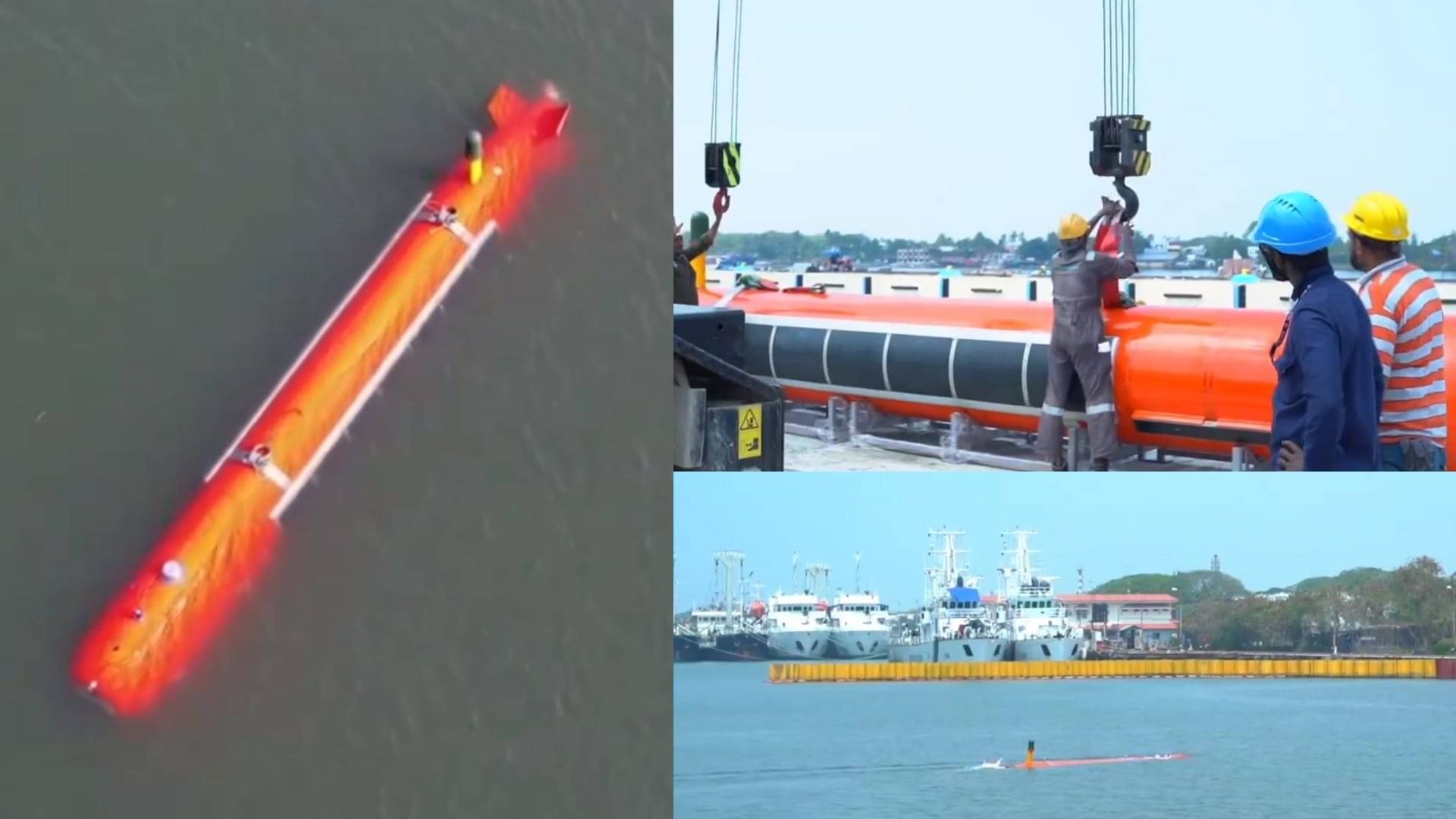SOURCE: AFI


India’s Defence Research and Development Organisation (DRDO) has made significant strides in its High Endurance Autonomous Underwater Vehicle (HEAUV) program, with developmental trials ongoing for over a year. The 6-tonne, 10-meter-long HEAUV, designed for critical missions like mine countermeasures (MCM) and intelligence, surveillance, and reconnaissance (ISR), was tested in a lake in March 2025, as showcased in a DRDO video. This development, led by DRDO’s Naval Science and Technological Laboratory (NSTL), comes at a crucial time as India ramps up its maritime capabilities to counter China’s growing underwater presence in the Indian Ocean Region (IOR), particularly following the recent non-nuclear hydrogen bomb test by China’s PLA.
The HEAUV is engineered for endurance and versatility, capable of operating for up to 15 days and diving to depths of 300 meters. Its communication systems include acoustic, UHF, C Band, and satellite communication (satcom), ensuring robust connectivity in diverse underwater environments. The vehicle is equipped with advanced sensors developed by DRDO’s Naval Physical and Oceanographic Laboratory (NPOL), including a front-looking sonar, a flank array sonar for underwater detection, and a side-scan sonar primarily for MCM operations. A low-power, portable X-band 360° surveillance radar, developed by DRDO’s Electronics and Radar Development Establishment (LRDE), enhances its ISR capabilities by detecting and tracking subsurface targets at periodic intervals.
The HEAUV’s maiden surface run, conducted on March 7, 2024, at the Cochin Shipyard’s International Ship Repair Facility (ISRF) Jetty in Kochi, successfully met all mission parameters. Subsequent lake trials in March 2025, as reported by Naval News, confirmed the vehicle’s dynamics in both surface and submerged conditions, with flawless performance of its sonar and communication systems. A model of the HEAUV was also displayed at Aero India 2025, highlighting its potential as a game-changer in India’s underwater defense strategy.
The HEAUV’s development is a direct response to growing maritime threats in the IOR, particularly from China. The Indian Navy is set to operationalize a state-of-the-art underwater surveillance network across strategic areas like the Ninety East Ridge, Andaman and Nicobar Islands, and the Bay of Bengal, as reported by Millennium Post on April 19, 2025. This “Deep Ocean Watch” project, utilizing towed array sonars on P-8I Poseidon aircraft and Kolkata-class destroyers, aims to detect Chinese submarines, including the Type 039 Yuan-class and nuclear-powered Type 094 Jin-class, which have doubled their deployments in the IOR since 2020.
China’s recent test of a non-nuclear hydrogen bomb on April 20, 2025, developed by the China State Shipbuilding Corporation (CSSC), has heightened regional tensions. The bomb, utilizing magnesium hydride, demonstrated its potential for anti-electronics and area-denial operations, raising concerns about its integration into China’s underwater platforms, such as hydrogen-powered drones or submarines. This development underscores the urgency of India’s HEAUV program, which enhances the Navy’s ability to detect, track, and neutralize such threats in contested waters.
The HEAUV program aligns with India’s broader push to strengthen its maritime defense capabilities. The Indian Navy’s collaboration with the U.S. during the Tiger Triumph 2025 exercise, culminating in a large-scale amphibious landing drill in Kakinada, included discussions on integrating autonomous systems into future operations. The U.S. Navy highlighted plans for greater use of autonomous systems in Tiger Triumph 2026, signaling a growing trend toward unmanned maritime platforms in the Indo-Pacific.
Globally, autonomous underwater vehicles (AUVs) are gaining prominence. Vatn Systems, a U.S. defense tech firm, partnered with Palantir Technologies on April 20, 2025, to scale AUV manufacturing for the U.S. military and allies, leveraging AI-driven insights to accelerate production. Similarly, Anduril’s Seabed Sentry, unveiled on April 4, 2025, offers AI-enabled undersea sensor networks for persistent monitoring, reflecting the global shift toward scalable, cost-effective underwater systems.
NOTE: AFI is a proud outsourced content creator partner of IDRW.ORG. All content created by AFI is the sole property of AFI and is protected by copyright. AFI takes copyright infringement seriously and will pursue all legal options available to protect its content.